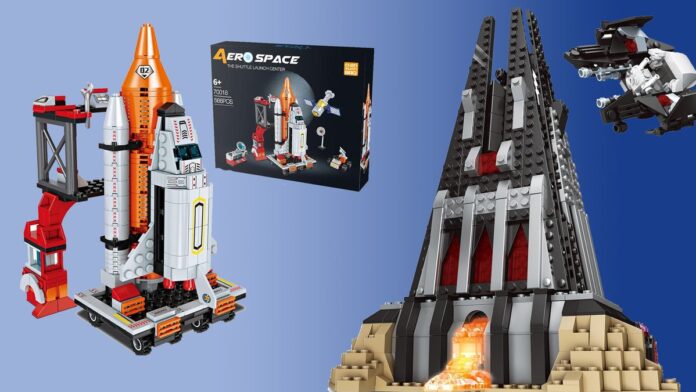There’s one thing we’ve noticed this year as we’ve been looking for the best Black Friday deals on Lego: There’s more fake ‘Lego’ than ever, and it’s dominating Amazon’s Black Friday pages.
If you’re shopping for genuine Lego, make sure you don’t get caught out by it, and make sure you know what you’re buying.
Now, plenty of people will be happy buying a brick toy from a brand that’s not Lego. The trouble is, that many listings purposefully obfuscate the brand, making it difficult to know exactly what you’re buying. It’s made doubly difficult by the fact that many of these cheap imitators ape set designs actually made and sold by Lego. So you might think you’re getting a hot deal on the latest Lego Star Wars set, but it’s actually coming from a completely different company.
Best Lego deals this Black Friday weekend 2023
Problems arise due to the fact that many of these sets will not be made to the same, strict quality control rules of Lego sets. Bricks won’t be made of the same high-quality plastic. Instructions might not be legible. Your pieces might not click together in the way that you’d hoped.
So, to ensure you don’t get caught out while shopping for Lego deals this Black Friday weekend and into Cyber Monday, we’ve put together some helpful advice on things to watch out for, and how to check you’re definitely buying genuine Lego.
How to spot imitation Lego during Black Friday weekend 2023
- Look for the phrase ‘compatible with Lego’ in the listing
- Check for an official set number
- Check product images for the official Lego logo
The brands selling cheap imitation bricks want to make sure they come up when searching the word ‘Lego’. Indeed, do a search for ‘Lego’ in Amazon’s Black Friday sale section, and you’ll find more fake Lego than the real stuff. That’s because the product listings often still include the word ‘Lego’ in there. But typically it’ll be part of a phrase, like compatible with Lego, or works with Lego bricks. Watch out for these phrases or similar, because that’s your first red flag!
Another thing to check for is whether or not there’s an official set number. Every single set produced by Lego has a five-digit identifier: the UCS Luke Skywalker’s Landspeeder is 75431, for example, and the Marvel Avengers Advent Calendar is 76267. Official Lego listings will always have this number in the title. If it’s not there, it’s likely not genuine.
If there is a number? It may be wise to cross-check it on the official Lego website to ensure the same set comes up. Just pop in the number into the Lego website’s search box, and if it’s an actual set number, it’ll pull up a result.
Finally, look at the product images. Does it have Lego’s instantly recognizable logo on there? It’s a red square with ‘Lego’ written in white bubble writing. Every single Lego product has this logo in the top-left corner of the box. If you can’t see that on the product images, it’s likely not real Lego.
If you want to buy other brick brands this Black Friday weekend, go for it — but be careful
- Read reviews first
- Check set and piece dimensions
We should stress that just because something isn’t branded ‘Lego’ doesn’t mean it’s going to be bad. We’re the first to admit that some non-Lego brick building sets look really cool, like this astronaut, or this BrickHeadz-style Link from The Legend of Zelda figure. The trouble is that they all come from different manufacturers, and so there’s no guarantee of their quality.
If you buy a genuine Lego set, you know exactly what the bricks are going to feel like, you know how it’s going to be packaged, and you know the size and scale of the build you’re buying. When it comes to non-Lego brands, there’s no standard for any of that, so you need to be extra careful and ensure you read the full listing carefully.
Check reviews to see what other users think of the quality of the item. If there are lots of positive reviews, that’s generally a good sign. We particularly like reviews where users have uploaded their own images: It adds a layer of authenticity. If there aren’t many reviews, or there’s a good amount of negative reviews, that’s typically a warning sign.
Also, check product dimensions. Lots of other brick toy brands use micro-scale bricks, much smaller than Lego bricks, resulting in smaller builds. Some are also just deceptively scaled in the product image. Take this ‘Typewriter Building Set’ for example. The real Lego Typewriter costs $250, but this one is just $14.99. How? Because it’s actually a fraction of the size of the real thing.
There’s still fun to be had if you buy another brick brand other than Lego. But just exercise caution while browsing retailers – particularly Amazon – this Black Friday weekend. Make sure you know what you’re buying. If you want genuine Lego but aren’t sure that the item you’ve found is the real thing, always double-check against the official Lego website first.

